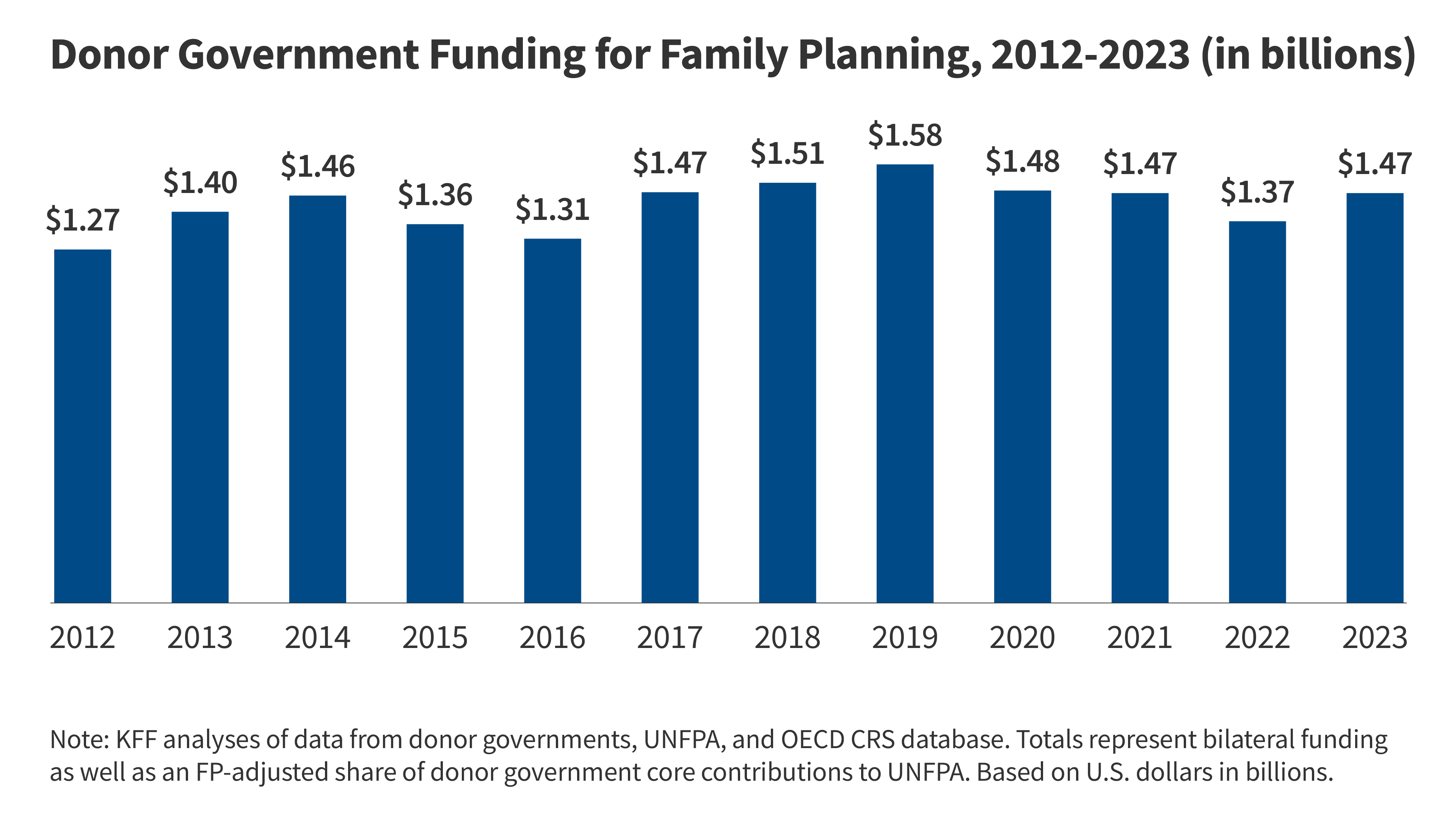This report provides an analysis of donor government funding for family planning in low- and middle-income countries in 2023, the most recent year available, as well as trends over time. It includes both bilateral funding from donor governments and their contributions to the United Nations Population Fund (UNFPA). It is part of an effort by KFF to track such funding that began after the London Summit on Family Planning in 2012. Overall, donor government funding for family planning increased in 2023, returning to prior year levels, but still below its peak in 2019.
Key findings include the following:
- Family planning funding from donor governments was US$1.47 billion in 2023. Most funding is provided bilaterally (US$1.4 billion or 95%). The remainder – US$69.6 million (5%) – is for multilateral contributions to UNFPA’s core resources, adjusted for an estimated family planning share.
- This represents an increase of 7% (US$101.1 million) in 2023 compared to US$1.37 billion in 2022 and is a return to prior year levels, but still below its peak reached in 2019 (US$1.58 billion).
- The overall increase was due to increased bilateral funding from most donor governments; multilateral funding (contributions to UNFPA’s core resources) declined slightly largely due to decreases by Germany, Sweden, and the U.S.
- Total funding increased from five donor governments in 2023 (Canada, Germany, the Netherlands, Norway, and the U.K.). Funding from the U.S. remained flat, and three countries decreased – Australia, Denmark, and Sweden. These trends were the same after accounting for exchange rate fluctuations, except for Sweden, which increased in currency of origin.
- The U.S. continued to be the largest donor to family planning in 2023, accounting for 40% (US$582.5 million) of total funding from governments, followed by the Netherlands (US$246.5 million, 17%), the U.K. (US$198.6 million, 13%), Sweden (US$124.5 million, 8%) and Canada (US$112.2 million, 8%). However, when family planning funding is standardized by the size of donor economies, the Netherlands ranked first, followed by Sweden, and Norway; the U.S. ranked 7th.
The future of donor government support for family planning, however, is uncertain. A second Trump administration will almost certainly see an end to U.S. support for UNFPA, and proposed cuts to bilateral funding, as was seen in his first term. Moreover, the extent to which other donors will fill in any gaps created by the U.S. is unclear, as they face their own financial pressures and changes in leadership. Such uncertainties, and potential funding reductions, would create new challenges for reaching people in low- and middle-income countries with family planning services.
Publisher: Source link









